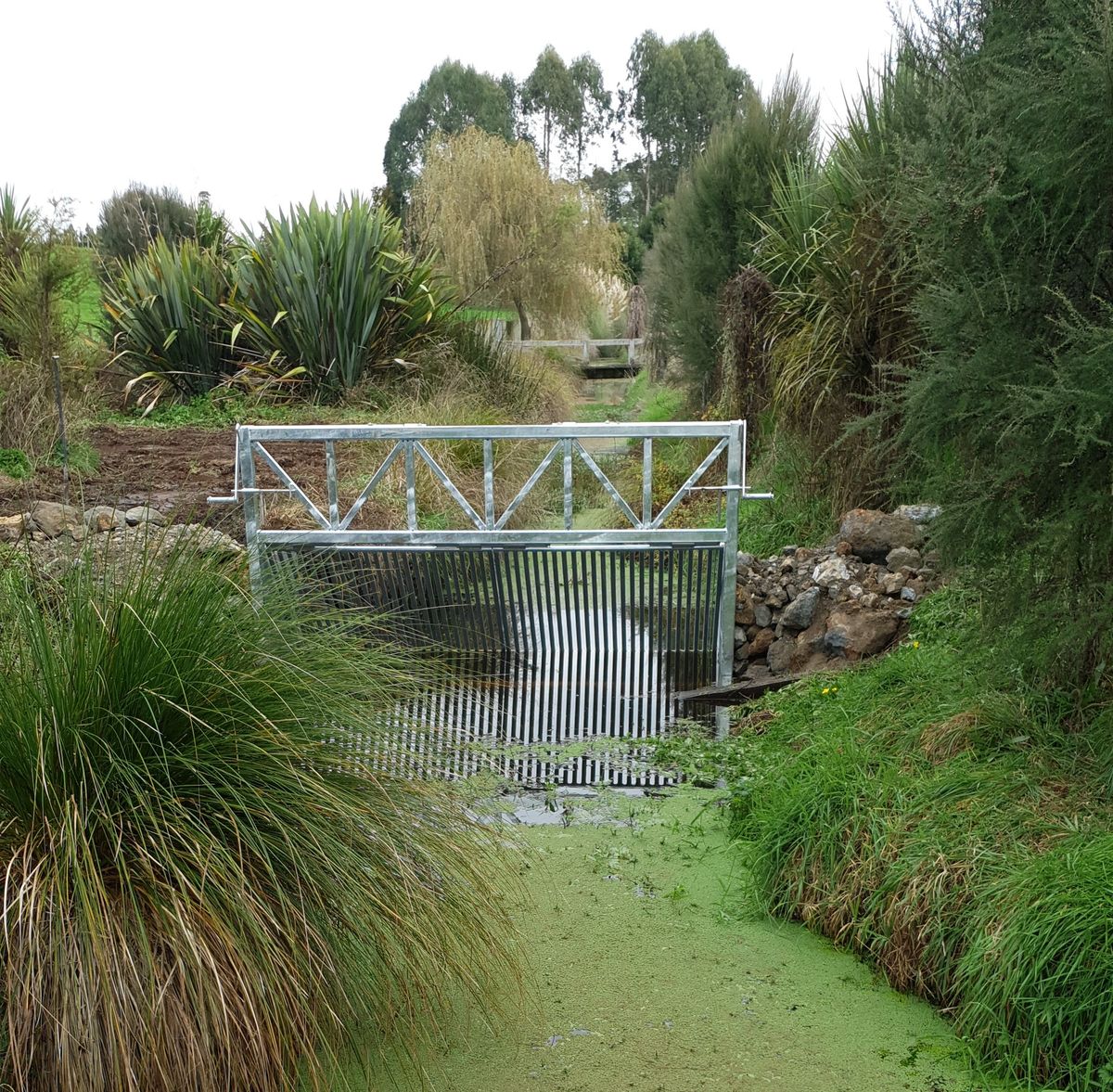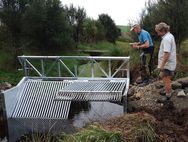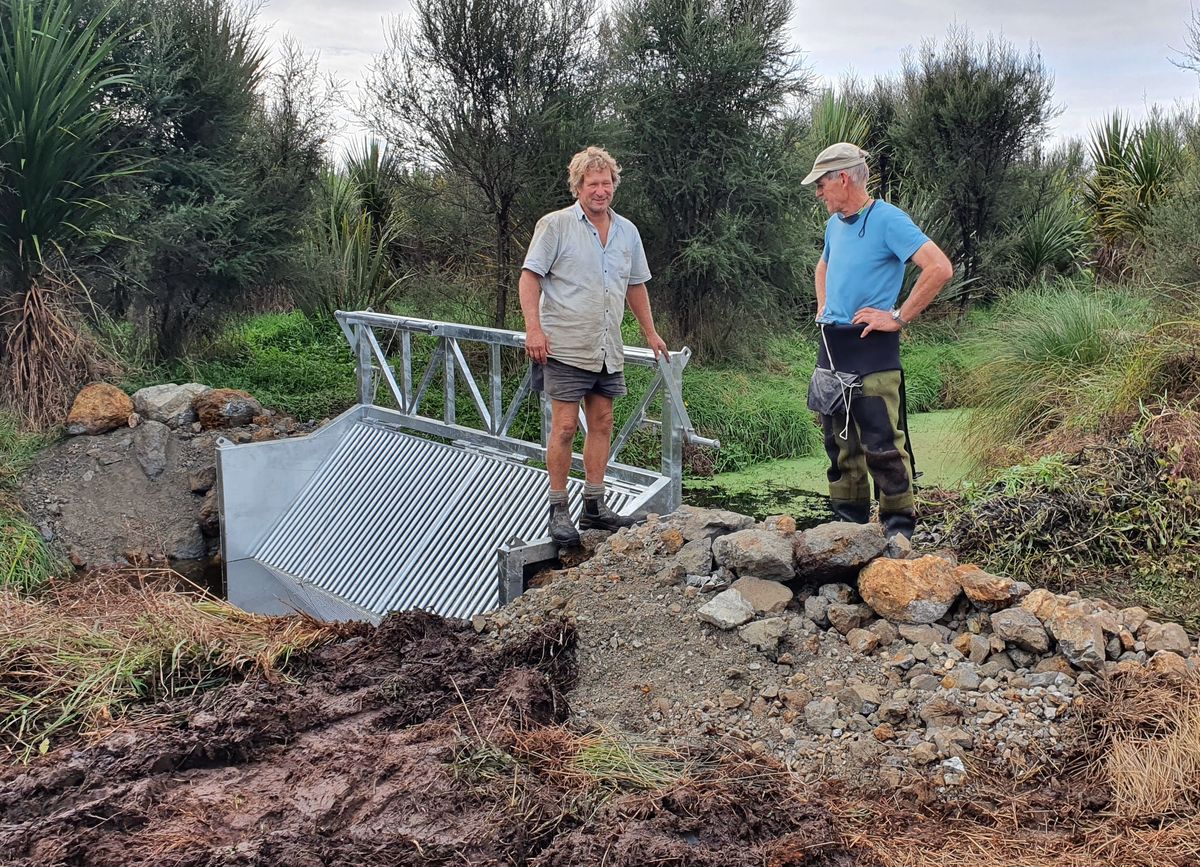
Koi Carp Barrier at Lake Ruatuna
What was the project about?
Though extensive pest fish netting, boat electric fishing and eDNA investigations show there are no Koi Carp detected in Lake Ruatuna, they are widespread in other parts of the Waikato region.
Koi carp are very hard to eradicate and highly destructive to freshwater ecosystems. As there is limited ability to control Koi carp once they infiltrate a waterway, Living Water wanted to trial the use of a barrier as a tool to keep Koi carp out of Lake Ruatuna.
What was the issue?
Koi carp (Cyprinus rubrofuscus) are native to Asia and Europe and look similar to goldfish. Their colouring is highly variable – gold, black, red, orange and pearly white - and they have whiskers at the corners of their mouth. They can grow as large as 75 cm long and weigh 10 kg. They are widespread in other parts of the Waikato, Auckland and Northland regions, and in isolated populations throughout the North Island. There are no known populations in the South Island.
Koi carp are devastating to freshwater environments. They feed like a vacuum cleaner, sucking up anything in their wake and blowing out anything they don't eat - which isn't much. They eat insects, fish eggs, small fish, plants and almost any other organic matter. Their manic feeding stirs up the bottom of waterways, further degrading water quality which destroys habitat for native fish, though Koi can happily live in degraded water. A female Koi can lay half a million eggs at a time so preventing Koi from entering a waterway is preferable to trying to control the population.
How was the project undertaken?
Living Water commissioned the design of a barrier across at outlet from Lake Ruatuna in November 2018. The design allows native fish and eels to swim through the grill, but Koi carp can’t get through. Consultation with the landowner and council was conducted in December 2019, and with Iwi and stakeholders in March 2020. An RMA resource consent application was filed in April 2020 and construction of the barrier commenced in March 2021. The barrier was completed in May 2021.
What has the project achieved?
Since the barrier was installed there have been no incursions of Koi carp into Lake Ruatuna. The barrier is checked regularly for blockages and weed clearance. Maintenance will be scheduled as part of regular predator trapping lines DOC Rangers and volunteers do around the lake. If the barrier continues to be successful at preventing Koi carp from entering Lake Ruatuna, the design could be used in other waterways to control the spread of Koi carp.

Dion Patterson

Rose Graham


Katie Collins
PROGRESS
- Designed by Gumbley Ecological Consultancy and Daniel Hall Engineering November 2018
- Consultation with landowner and Council Drainage December 2019
- Iwi and stakeholder consultation March 2020
- RMA Consent Application April 2020
- Construction Daniel Hall Engineering March 2021
- Installation completed May 2021
Benefits
- Koi carp are devastating to our freshwater environments, they feed like a vacuum cleaner, sucking up anything in their wake and blowing out anything they don't eat - which isn't much. They eat insects, fish eggs, small fish, plants and almost any other organic matter. Their manic feeding stirs up the bottom of waterways, further degrading water quality which destroys habitat for our native fish but Koi carp can happily live in degraded water
- A female koi can lay half a million eggs at a time so prevention preferable to trying to control the population.
What's Next
The barrier will be checked regularly for blockages and possible weed clearance. Maintenance will be scheduled as part of regular predator trapping lines DOC Rangers and volunteers do around the lake.
